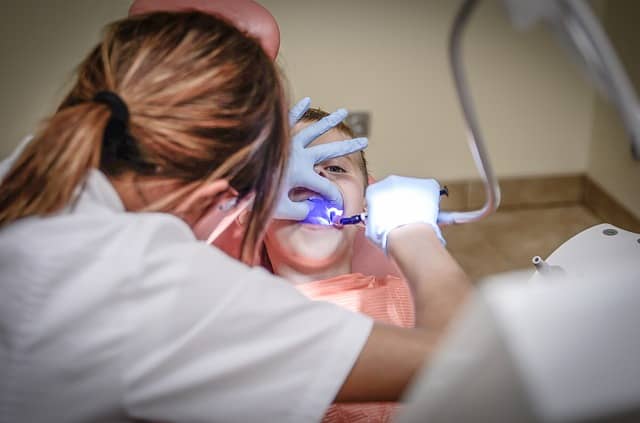When it comes to preventing cavities and overall good oral health, regular brushing and flossing pave the path to success. However, with there being so many nooks and crannies in your teeth, it is nearly impossible for a toothbrush or even floss to reach them all. Your molars, the teeth in the back of your mouth used for chewing, are especially susceptible to cavities because their surface is uneven. This makes them an ideal hiding spot for food and bacteria. In this post, we’ll take you through this wonder product. let’s get cracking.
So if brushing and flossing alone won’t do the trick when it comes to cavity prevention, what else is there? Dental sealants have been an integral part of proper oral hygiene since the 1960s. They are easy for your dental expert to apply and are relatively maintenance-free. They are, of course, not a substitute for appropriate oral care but more of an added layer of security against decay.
What Are Dental Sealants and How Do They Work?
A sealant is a thin coating made from plastic resin. They are placed on the chewing surface of your molars and help keep cavities from forming. Think of them as a protective shield against the food and bacteria that get trapped in your teeth, forming acids that lead to decay. A dental professional can apply them quickly and pain-free. Sealants have been shown to significantly reduce the risk of decay in molars up to 80%, making them a powerful ally in your oral health routine.
How Are Sealants Applied?
Sealants are applied in just a few simple steps and there is no need for numbing. Within minutes, your teeth will be protected for years to come. Here’s how it’s done:
- Using polish and a rotating brush, your teeth are cleaned thoroughly.
- The teeth are rinsed and dried. Sometimes cotton will be placed around the teeth to help keep them dry.
- An acidic solution is applied to the tops of the molars. This roughens them up a bit, which provides a better bonding for the sealant.
- Your teeth are rinsed and dried again. More cotton may be used to keep them dry.
- The sealant is painted onto the tooth enamel. It bonds to the tooth and hardens to form a protective barrier. Sometimes, a curing light may be used to help the sealant harden.
That’s it! Your new sealants are done! No need to wait any period of time to resume your regular activities; you can carry on as if there was nothing done at all.
Who’s a Good Candidate for Sealants?
Typically, sealants are recommended for young children who may not always be able to brush and floss their back teeth properly. They should be applied as soon as the first permanent molars emerge, around age six. Sealants should also be applied to the second permanent molars, which usually break through around age 12. However, children aren’t the only ones who can benefit from sealants. Many adults may also be good candidates as some people have a natural predisposition to cavities. Adults may also develop pits in their teeth where none existed before and sealants are a good way to protect them from damage.
Although not very common, your dental provider may recommend dental sealants for your baby. If your baby’s teeth have deep pits or grooves, they may be worth it. Baby teeth serve as space-savers for adult teeth; keeping them healthy is essential so that they don’t fall out too soon.
How Long Do Sealants Last?
Most sealants can last for up to ten years with proper care. Maintaining a routine checkup schedule will allow your provider to examine your sealants and repair or replace them if needed. Your sealants don’t require any special care so you can brush and floss without fear of harming them. Sealants are not a replacement for good dental hygiene at home so make sure to continue brushing and flossing at least twice a day. A good rule of thumb is to treat all your teeth as if they were as prone to cavities as your molars.
Are Sealants Safe?
When you are thinking about a dental procedure, especially for your kids, safety is always a chief concern. With so much talk about BPA in plastics over the last few years, it’s natural to be worried about placing a plastic product on your child’s (or your own) teeth. While there may be trace amounts of BPA in sealants, The American Dental Association has deemed them to be absolutely safe. There is actually more BPA in the air you breathe every day than what is found in a sealant! However, there are some BPA-free sealant options available so be sure to talk to your provider about what is right for you and your family.
What Do Sealants Cost?
It is important to consider costs when planning for any procedure. Think about short-term versus long-term expenses. While some dental insurance will cover the cost of sealants for children, even paying for them outright is still usually less expensive than paying for a filling. If you are paying to fill multiple cavities over 5-10 years, those costs will definitely be more than the application of a sealant. Paying now for prevention will save you the cost of a cure in the future.
How Do I Get Started?
When you are thinking about getting dental sealants for your child or yourself, it’s important to sit down with an expert to discuss all of the options available to you. Dr. Samuel Papandreas and the staff at Papandreas Orthodontics are ready to get you on your way to a healthy mouth and a smile you can be proud of for a lifetime!
Conclusion
You can schedule a complimentary consultation via the real-time scheduler on their website. If you’d rather give them a call, you can speak with the North Royalton office by calling 440-582-8585 or the Brunswick office at 330-558-9092. Your smile is the first impression others get, so let them help you give you a great one!
- Which tip will you try first???
- Either way, let us know by leaving a comment below right now and continue the conversation.
14200 Ridge Rd
North Royalton, OH 44133
United States
Dental Sealants For Children (What – When – Why)




